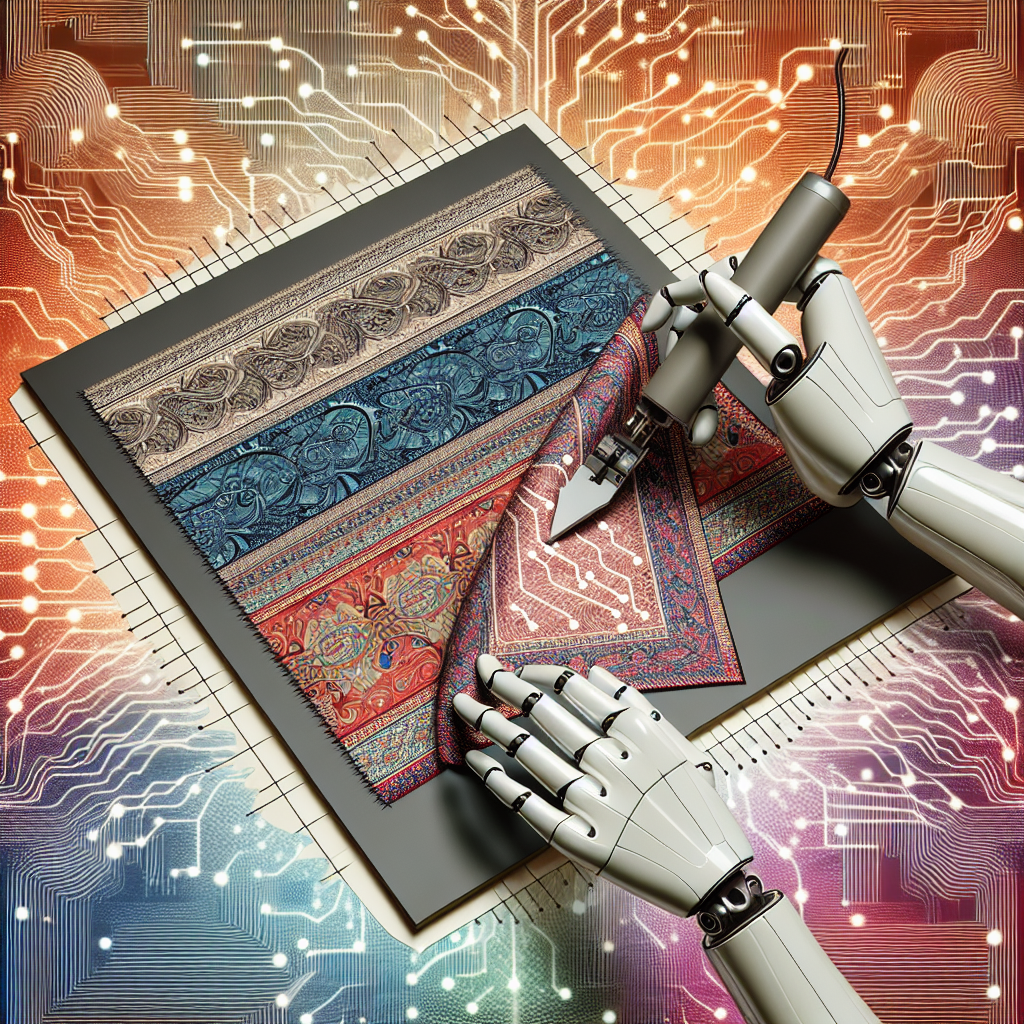Artificial Intelligence (AI) has been making waves in various industries, and textile design is no exception. With the advancement of AI technology, designers are now able to create innovative fabrics that were once thought to be impossible. From predicting trends to creating intricate patterns, AI-powered fabric innovation is revolutionizing the way we think about textiles.
One of the key ways in which AI is transforming textile design is through the use of generative design. Generative design is a process that uses algorithms to generate thousands of design options based on a set of parameters. This allows designers to explore a wide range of possibilities and quickly iterate on their ideas. In the world of textile design, generative design can be used to create complex patterns and textures that would be difficult to achieve manually.
Another way in which AI is changing textile design is through the use of predictive analytics. By analyzing vast amounts of data, AI algorithms can predict trends in the fashion industry and help designers create fabrics that are in line with consumer preferences. This can help designers stay ahead of the curve and produce fabrics that are both stylish and marketable.
AI-powered fabric innovation is also enabling designers to create fabrics with unique properties that were previously impossible to achieve. For example, AI algorithms can be used to optimize the structure of a fabric to enhance its performance, such as making it more durable or breathable. This opens up a whole new world of possibilities for designers to create fabrics that are not only aesthetically pleasing but also functional and practical.
In addition to creating new fabrics, AI is also changing the way fabrics are manufactured. By using AI algorithms to optimize production processes, manufacturers can reduce waste, improve efficiency, and lower costs. This not only benefits the bottom line but also has a positive impact on the environment by reducing the industry’s carbon footprint.
Overall, AI-powered fabric innovation is revolutionizing the textile design industry by enabling designers to create fabrics that are more innovative, sustainable, and marketable. With the help of AI technology, the possibilities for textile design are endless, and we can expect to see even more groundbreaking innovations in the years to come.
FAQs:
Q: How is AI being used in textile design?
A: AI is being used in textile design in a variety of ways, such as generative design, predictive analytics, and optimizing production processes. These technologies enable designers to create innovative fabrics, predict trends, and improve manufacturing efficiency.
Q: Can AI create unique patterns and textures?
A: Yes, AI algorithms can generate thousands of design options based on a set of parameters, allowing designers to create complex patterns and textures that would be difficult to achieve manually.
Q: How does AI benefit the textile industry?
A: AI benefits the textile industry by enabling designers to create fabrics that are more innovative, sustainable, and marketable. It also helps manufacturers reduce waste, improve efficiency, and lower costs.
Q: What are some examples of AI-powered fabric innovation?
A: Some examples of AI-powered fabric innovation include fabrics with enhanced performance properties, trend-predicting algorithms, and optimized production processes. These innovations are changing the way we think about textiles and opening up new possibilities for designers.
Q: What are the future possibilities for AI in textile design?
A: The future possibilities for AI in textile design are endless. We can expect to see even more groundbreaking innovations, such as fabrics with advanced functionality, personalized designs, and sustainable materials. AI technology will continue to revolutionize the industry and push the boundaries of what is possible in textile design.

